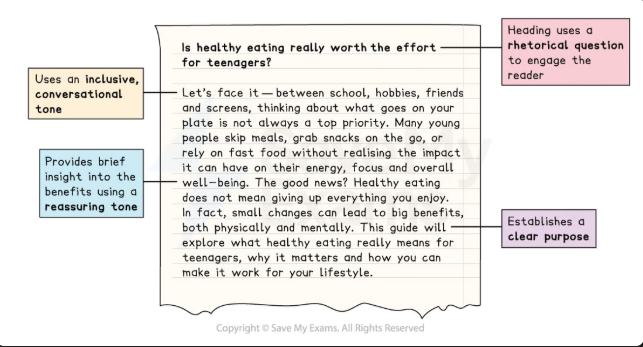How to Write a Guide for GCSE
Guide |
|---|
In a guide you should:
|
Paragraph structure for a guide
Below is an example of how you might structure a guide to healthy eating for teenagers:
Heading | Is healthy eating really worth the effort for teenagers? |
|---|---|
Paragraph 1: Introduction | This is your opportunity to engage your reader, so use inclusive language and some facts:
|
Paragraph 2: Sub-heading | What does healthy eating actually mean? |
Paragraph 3: Sub-heading | Why it matters |
Paragraph 4: Sub-heading | Food and mental health |
Paragraph 5: Conclusion | Finish with a conclusion indicating where the reader could go for further information, e.g.:
|
